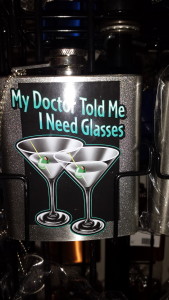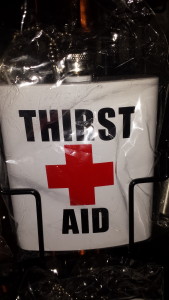Over the last few years, I’ve written about the marijuana situation in Colorado and the problems of edibles, the first marijuana vending machine, and public health campaigns about the dangers of marijuana. I took the New York Times to task for their pro-legalization stance, spread the news when NYC decriminalized marijuana, and reacted when Nathan Edelman (the head of the Drug Policy Alliance and staunch pro-legalization advocate) spoke about his newfound concern regarding the mass marketing dangers posed by the new marijuana industry. I give about a half dozen presentations on “The History of Marijuana Policy” each year. A free webinar version of it is available from the National Association of Addiction Professionals (NAADAC) here.
A close friend of mine told me recently that he thought that my work on reforming the criminal justice system in America does not align well with my position on marijuana. I asked him what he thought my position on marijuana was, and he told me that I was for keeping it criminalized. I’m writing this post to inform people about the difference between legalization, criminalization, medicalization, and decriminalization. I am firmly ensconced in the decriminalization camp.
Criminalization – It is illegal to buy, sell, possess or use marijuana. This is the current policy in a majority of states. One can be arrested and charged. One can be sent to jail or prison for using or possessing marijuana. These laws disproportionately effect minorities and people from lower-income households. Having a criminal record makes it very difficult to get a job, a loan, or an apartment. It can also make pursuing higher education problematic as well. For many people, an arrest for marijuana use at 19 can be an albatross for the rest of their lives. Of all the policies here, this is, by far, the worst option.
Legalization – The possession and consumption of marijuana is legal for people 21 years and older. It usually allows for the personal possession of up to 1 ounce. It is regulated by the state government, requires a license to sell it, and is a source of tax revenue. Colorado, Washington, Colorado, Alaska and the D.C. have all legalized marijuana for recreational use. My chief concern about the legalization of marijuana is that it will encourage more people to use it (think about the rampant use of prescription drugs and how the legality of them helped lead to a surge in their use – it is important that I go on record that I believe that the abuse of RX stimulants, depressants and opiates is worse than marijuana abuse). The tax revenue is a major selling point for states with severe budget problems (almost every state). Another worry of mine is: will the widespread use of marijuana lead to more costs (will it lead to more health problems, thus offsetting the revenues brought in by selling it)? That will be difficult to measure (there is a precedent here though – it is widely agreed that for every dollar that tobacco taxes bring it, it leads to $10 in social and healthcare costs). All that said, if the tax revenues are large, this discussion will be a moot point and more and more states will chase those new dollars.
Medicalization – In 1996, the first medical marijuana law passed in Oakland, CA. It created a co-op that allowed members to grow and use marijuana if they suffered from HIV, cancer, glaucoma and a few other severe conditions. After a few years, that law was overturned for a short time but the rubicon had been crossed and California eventually allowed for the use of medical marijuana with a doctor’s note (not prescription). Currently, 20 states have medical marijuana programs, including most of the Northeast and California. Originally pushed for helping people with a half dozen of severe and/or chronic conditions, you can now get medical marijuana for over 200 conditions in a number of states. Medical marijuana is taxed lower than recreational marijuana, so there is an incentive for consumers to try to get medical marijuana. Most research on the medical benefits of marijuana are shoddy, but that is partly the result of the government’s listing marijuana as a schedule I drug. I believe that marijuana should be downgraded to schedule II so that research can be conducted and we can be sure of whether or not there are actual medical benefits.
Decriminalization – (I’ve taken the following definition from NORML) “Typically, decriminalization means no arrest, prison time, or criminal record for the first-time possession of a small amount of marijuana for personal consumption. In most decriminalized states, these offenses are treated like a minor traffic violation.” Nine states have effectively decriminalized marijuana and two more have laws that will soon be enacted (Delaware in late 2015 and Missouri (!) in 2017). I believe in this path because I think legalization encourages more people to use and I think that marijuana, like tobacco and alcohol, may be revenue negative (the taxes brought in won’t cover the healthcare, social, workplace and legal (underage arrests, high driving) costs).
I have argued for keeping the status quo for the next few years to see the differences in addiction rates, arrests, tax revenues, crashes, and health benefits in the states that have different policies. In three to five years, we will have some excellent data so that we can determine what is the best policy path. If the data shows that I am wrong, I will admit it (rather than do like many who double down on their beliefs despite the presence of solid data).




